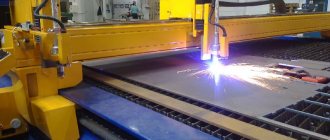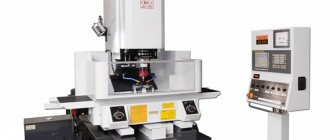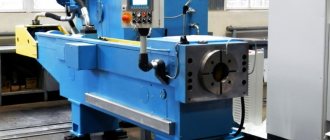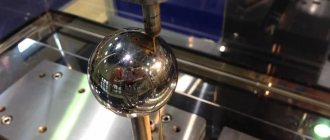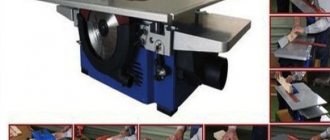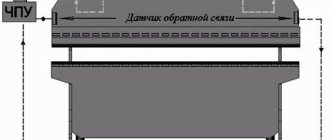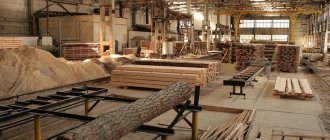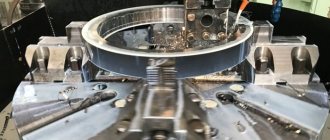Advantages of fiber optic cutting equipment compared to analogues
Compared to CO2
It is superior to laser sources using carbon dioxide in the following parameters:
- the quality of the generated laser beam (the cut lines are thinner, the formed spot has a smaller area, the work efficiency is higher, the processing result is better);
- significant cutting speed (the power of the device is twice as high as that of analogues with CO2);
- significant durability – fiber-optic laser systems consistently last up to 100,000 hours;
- efficiency of electro-optical conversion. Its efficiency is almost 30% (three times higher than that of analogues with which the comparison is being made), environmental protection, energy saving;
- low cost of application. N consumed does not exceed 30% of the consumption of devices with carbon dioxide;
- low maintenance costs, no reflective lenses required;
- ease of maintenance and operation (no optical path adjustment required).
Compared to YAG
The comparative analysis shows the following:
- superior cutting speed by almost 5 times.
Ideal for use in production.
- Application cost is lower than YAG solid cutting;
- the efficiency of the photoelectric conversion that occurs is 10 times higher.
How much power does a fiber emitter need to cut metal?
Let's look at specific examples. Let's take stainless steel and consider four options: 500 Watt, 1.5, 3 and 6 kilowatts on nitrogen.
A 500 W emitter can cut 1 millimeter at a speed of about twelve meters per minute, but such an emitter will not cut anything thicker than 3 millimeters. The speed at 3 millimeters will be about seven tenths.
If you take a one and a half kilowatt device, then such an emitter will cut the same millimeter at a speed of about twenty-six meters per minute. It will cut three millimeters at a speed of four meters per minute, and the maximum thickness for such an emitter will be 6 millimeters at a speed of one meter per minute.
Three kilowatts will cut one millimeter at a speed of thirty-four meters per minute, three millimeters at a speed of eight and a half meters per minute, six millimeters at a speed of three meters per minute, and the maximum thickness will be twelve millimeters at a speed of half a meter per minute.
Well, six kilowatts, for comparison, will cut 1 millimeter at a speed of about forty-one meters per minute, three millimeters at a speed of about fifteen to sixteen meters per minute, six millimeters at a speed of about five meters per minute, twelve millimeters at a speed of one meter per minute and the maximum thickness will be sixteen millimeters at a rate of six tenths.
I would like to note that depending on the material and gas you are working with, the indicators will differ. If five hundred watts on nitrogen cuts one millimeter of stainless steel at a speed of twelve meters per minute, then the same emitter will cut carbon steel at eight meters per minute with oxygen. One millimeter of aluminum or copper on nitrogen on the same emitter is about five meters per minute.
Follow the link in the description to see tables that indicate what cutting speed will be with different materials of different thicknesses using different gases and emitters of different powers.
If necessary, we are ready to assemble for you a machine with even more powerful emitters, up to twenty-five kilowatts. But most likely, in this case, it would be most profitable for you to buy a plasma machine.
It should also be noted here that such equipment requires a special reinforced frame; just imagine what thickness of material such emitters take. But if you are one of those rare people who need such specific machines, please contact us.
Design of a fiber optic laser and principles of its operation
The device creates single-mode radiation with maximum quality and performance parameters.
The diameters of the fiber emitters are microscopic. This allows you to cut out shapes of the most complex geometry as accurately as possible in metal sheets of significant thickness and high hardness.
The beam formed in optical fiber is designed primarily to work with metals. This determines the scope of its application.
In addition to metals, it works quite well on glass, stone, and plastics.
Protecting fiber from reflected rays
Working with some types of materials can be potentially dangerous for the emitter due to their high reflectivity. The advantage of IPG is that it protects the fiber from reflected rays. There are two options for emitters: LK and LS, both have fiber protection, only LK has passive protection with sensors that catch re-reflections and simply warns of danger, while LS has an active protection system that neutralizes dangerous reflections and you can cut further, without interrupting work. That is, if you are cutting brass, copper, aluminum or mirror stainless steel, then IPG LS with an active anti-reflection system is your choice.
In addition, IPG has a better Gaussian power distribution, so the cut is more stable, but this does not affect the cutting speed and thickness.
Fiber type laser source device
The cable length can vary from 2 to 100 meters. In order to optimize the working space, it is assembled into a ring and placed on top.
This principle of converting light into laser radiation is one of the most optimal today. The efficiency of this process can reach 90%. The laser generation process occurs without distortion of the background of the generated wave and loss of its power along the entire optical travel route.
The laser beam formation system in fiber devices includes two basic elements:
- semiconductor diodes (pump lamp);
- fiber optic cable.
Inside it is a fiber that conducts light, the core of which is made of transparent quartz. The latter is doped with rare earth metal ions. Most often, ytterbium is in demand.
The ends of the main rod are equipped with a diffraction (Bragg) grating. These are strokes applied in a special way. In the areas where they were applied, the reflectivity changes. They are used as resonators, reflect light moving along the fiber, and maintain the required wavelength. Thanks to this, the beam retains monochrome and other quality characteristics.
The diode lamps turn on when the machine is started. They feed the light guide with energy and pump the fiber along its length. The core goes into working condition. The ytterbium coating is activated. This leads to the generation of ions.
Diffraction gratings, playing the role of reflecting mirrors, ensure the constant presence of part of the light flux inside the optical fibers. This initiates the process of creating new atoms.
The second half of the generated light energy is emitted outward by a powerful and stable laser beam.
The output side of the optical cable is connected to a cutting head that has several degrees of mobility. The latter is exposed above the surface of the material being processed. A focusing lens is installed inside the head. It, according to the commands of the control system, forms a spot of the required diameter from the beam and delivers it to the place where the cut is made.
Advantages and disadvantages
Laser cutting machines have the following advantages:
- ease of processing of fragile parts;
- low degree of error when positioning the laser above the surface being treated;
- convenient control system;
- cutting workpieces of any shape;
- ease of engraving and cutting products made of hard alloys;
- cutting thickness: copper, brass - up to 1.5 cm, steel, aluminum - up to 2 cm, stainless steel - up to 5 cm;
- high processing speed;
- minimum cost of finished products.
Main disadvantages:
- complexity of design, maintenance, repairs;
- high cost of equipment and components;
- limited thickness of workpieces;
- significant energy consumption;
- special safety requirements for installation and operation.
Cutting workpieces of any shape
Advantages of fiber lasers
Solid-state equipment is superior to other types of lasers in a number of ways:
- ensures positioning of the head at any speed of its movement with precision accuracy;
- allows you to obtain significant (up to 1000 kW and above) power;
- provides micron focusing of the beam, bringing it, at the cutting point, to maximum intensity;
- the formed beam has minimal angular divergence and almost zero losses;
- multifunctionality - the laser beam perforates, engraves, and cuts materials.
In addition, it welds them, allows soldering, allows the surface to be hardened, cleaned of contaminants, and fused.
- The laser beam forms a hole without chips, the cut walls are smooth and clean;
- the output power is limited only by that of the source used for optical pumping;
- working life exceeds 100,000 hours;
- minimal commissioning and does not require adjustment.
They are easy to transport and the devices are compact.
- It is air-cooled, eliminating problems with water supply typical of water thermostats;
- waste-free technology, silent operation.
Metal cutting speed table
| Source power | 500W | 750W | 1000W | 1500W | 2000W | 3000W | 4000W | 6000W | 8000W | 10000W | ||
| Material/Gas | Thickness, mm | Nozzle size, mm. | Speed, m/min | |||||||||
| Carbon steel (Oxygen) | 1 | 1.2 | 8 | 9 | 10 | 22 | 26 | 34 | 38 | 42 | 46 | 50 |
| 2 | 1.5 | 4 | 5 | 6,2 | 6,8 | 7,2 | 7,5 | 7,8 | 8,2 | 36 | 9 | |
| 3 | 2.0 | 2,6 | 2,8 | 3 | 3,6 | 4 | 4,4 | 5 | 5,5 | 6 | 6.5 | |
| 4 | 2.0 | 1,6 | 1,8 | 2,2 | 2,8 | 3,2 | 3,8 | 4,4 | 5 | 5.5 | 6.1 | |
| 5 | 2.0 | 1 | 1,4 | 1,8 | 2,4 | 2,8 | 3,2 | 3,4 | 3,6 | 3.8 | 4.2 | |
| 6 | 2.5 | 1 | 1,6 | 2 | 2,4 | 2,8 | 3,2 | 3,4 | 3.6 | 4.5 | ||
| 8 | 2.5 | 0,8 | 1,2 | 1,4 | 1,6 | 2,2 | 2,6 | 3 | 3.3 | 3.5 | ||
| 10 | 2.5 | 0,7 | 1 | 1,2 | 1,6 | 2 | 2,4 | 2.8 | 3.2 | |||
| 12 | 3 | 0,6 | 0,8 | 1 | 1,4 | 1,8 | 2 | 2.2 | 2.4 | |||
| 14 | 3 | 0,6 | 0,9 | 1 | 1,2 | 1,3 | 1.4 | 1.6 | ||||
| 16 | 4 | 0,5 | 0,8 | 0,8 | 1 | 1,1 | 1.3 | 1.4 | ||||
| 18 | 4 | 0,7 | 0,7 | 0,9 | 1 | 1.2 | 1.3 | |||||
| 20 | 4 | 0,6 | 0,8 | 0,9 | 1.1 | 1.35 | ||||||
| 22 | 4 | 0,5 | 0,7 | 0,8 | 1 | 1.2 | ||||||
| 24 | 4 | 0,4 | 0,6 | 0.8 | 0.9 | |||||||
| 26 | 5 | 0.5 | 0.65 | |||||||||
| Source power | 500W | 750W | 1000W | 1500W | 2000W | 3000W | 4000W | 6000W | 8000W | 10000W thickness up to 40 mm. | ||
| Stainless steel (Nitrogen) | 1 | 1.5 | 12,4 | 18,5 | 23,8 | 26,4 | 30 | 34 | 38 | 41,4 | 57 | 65 |
| 2 | 1.5 | 4,7 | 5,1 | 10,8 | 11,9 | 12,7 | 15,4 | 24,4 | 28,6 | 38 | 58 | |
| 3 | 1.5 | 0,7 | 1,2 | 2,3 | 4,1 | 6,1 | 8,6 | 12,8 | 15,8 | 22 | 30 | |
| 4 | 1.5 | 0,8 | 1,3 | 2,2 | 4,2 | 5,5 | 7,4 | 9,4 | 16 | 22 | ||
| 5 | 1.5 | 0,7 | 1,2 | 2 | 4,3 | 5,1 | 6 | 11 | 17 | |||
| 6 | 1.5 | 1 | 1,8 | 3,1 | 3,8 | 4,7 | 5 | 15 | ||||
| 8 | 1.5 | 0,9 | 2 | 2,4 | 3,3 | 3.9 | 8.5 | |||||
| 10 | 1.5 | 0,8 | 1,1 | 1,3 | 1.9 | 5.9 | ||||||
| 12 | 1.5 | 0,5 | 0,7 | 1,1 | 1.5 | 3.4 | ||||||
| 14 | 1.5 | 0,6 | 0,8 | 1.1 | 2.3 | |||||||
| 16 | 1.5 | 0,6 | 0.7 | 1.6 | ||||||||
| Source power | 500W | 750W | 1000W | 1500W | 2000W | 3000W | 4000W | 6000W | 8000W | 10000W | ||
| Aluminum (Nitrogen) | 1 | 1.5 | 5,2 | 6,4 | 8,4 | 16 | 22 | 34 | 38 | 42 | 57 | no data |
| 2 | 1.5 | 2,2 | 3,4 | 6,6 | 8,4 | 15 | 21 | 25,5 | 38 | no data | ||
| 3 | 1.5 | 1,4 | 3,8 | 5,5 | 7,6 | 11,5 | 14,6 | 22 | no data | |||
| 4 | 1.5 | 1,4 | 2,6 | 4 | 5,2 | 5,8 | 16 | no data | ||||
| 5 | 1.5 | 1,7 | 3,3 | 4,4 | 4,9 | 11 | no data | |||||
| 6 | 1.5 | 0,9 | 2,1 | 3,4 | 4,1 | 7 | no data | |||||
| 8 | 1.5 | 0,9 | 1,3 | 2 | 3.6 | no data | ||||||
| 10 | 1.5 | 0,6 | 1,1 | 1,7 | 2.5 | no data | ||||||
| 12 | 1.5 | 0,5 | 0,8 | 1.7 | no data | |||||||
| 14 | 1.5 | 0,4 | 0,6 | 1.1 | no data | |||||||
| 16 | 1.5 | 0,5 | 0.9 | no data | ||||||||
| Source power | 500W | 750W | 1000W | 1500W | 2000W | 3000W | 4000W | 6000W | 8000W | 10000W | ||
| Copper (Nitrogen) | 1 | 1.5 | 5,2 | 6 | 8 | 12 | 14 | 22 | 26 | 32 | 57 | no data |
| 2 | 1.5 | 1,8 | 3,2 | 4 | 6 | 8 | 10 | 12 | 38 | no data | ||
| 3 | 1.5 | 1 | 2,2 | 3,4 | 5,2 | 6 | 6,4 | 22 | no data | |||
| 4 | 1.5 | 1,4 | 1,8 | 4 | 4,8 | 5,4 | 16 | no data | ||||
| 5 | 1.5 | 1,2 | 1,8 | 2,6 | 3,2 | 11 | no data | |||||
| 6 | 1.5 | 0,6 | 1,4 | 1,8 | 2,2 | 7 | no data | |||||
| 8 | 1.5 | 0,6 | 0,9 | 1,2 | 3.6 | no data | ||||||
| 10 | 1.5 | 0,4 | 0,6 | 2.5 | no data | |||||||
| 12 | 1.5 | 0,4 | 1.7 | no data |
How much do metal laser cutting services from professionals cost?
The following factors influence the price of metal laser cutting:
- characteristics of the metal and its thickness, please note that the price of cutting for the same material will increase with an increase in the thickness of the metal by at least 1 mm.
- the configuration of the part and the required precision of execution; as the complexity of the work increases, the price increases;
- batch size – the cost may decrease with an increase in the number of products in the order, as discounts may be provided;
- availability of a complete set of design documentation;
- deadlines, that is, an urgent order will cost more than one carried out in working hours.
Trekom LLC specializes in the design and manufacture of housings for electronic equipment. In the manufacture of cases and components, technologies are used - punching, cutting, bending, welding, milling, turning, painting, as well as processing of plastic and composite materials.
We carry out laser cutting and welding using the LRS-150 machine. Desktop size 600x300 mm. Metal cutting thickness up to 3 mm. We perform laser welding of stainless steel.
You can call us by phone or
What are the features of laser cutting of different types of metal?
- Laser cutting of aluminum
To cut aluminum, you need to use high-power laser radiation, this is explained by such properties of this metal as high thermal conductivity and the ability to absorb a laser beam.
To carry out laser cutting of metal, including aluminum, you need a special program with which you can set the parameters for cutting parts, and, of course, you cannot do without equipment; it can be used both in industrial production and by individuals.
In order to determine the required power of an aluminum cutting machine, it is necessary to know which parts are to be processed, and it is also important to take into account their dimensions. It is preferable to use low metal cutting speeds, because they will avoid the occurrence of deformations and ensure the formation of a neat surface, without burrs.
High quality laser cutting of aluminum is achieved due to the absence of contact between the cutting head of the tool and the workpiece: the beam is located on top and simply burns the part in the places to which it is directed. The laser machine is equipped with a blowing zone, which makes it possible to obtain perfectly even outlines of the processed products.
CNC laser cutting of aluminum allows you to focus the direction of the beam, which makes it possible to manufacture even complex structures from this metal, provided that the values taken from the drawings are carefully set.
CNC laser cutting of aluminum is carried out according to drawings and is characterized by high accuracy, which is achieved due to the absence of the human factor. All necessary values are entered into the program from the drawings; further operation of the equipment is carried out automatically and does not require the intervention of maintenance personnel.
I would like to note that such cutting allows for only one possibility of error - inaccurate measurement, which will entail incorrect preparation of the drawing. The equipment itself works very accurately.
CNC laser cutting of metal does not require the preparation of special forms, which allows you to experience savings when using this method of aluminum processing compared to others.
Using laser cutting, you can make metal parts yourself, without resorting to the services of large enterprises; this processing method is aimed at servicing orders consisting of small batches of products.
It is laser cutting that makes working with metal convenient, because its processing does not require mechanical attachment of aluminum to the equipment. This increases the accuracy of the work performed, because the static impact of the equipment on the material is eliminated.
This type of metal cutting is so automated that cutting the material is also performed without human assistance, so even if you do this work not on your own equipment, the price of such a service will remain very affordable.
- Laser cutting of stainless steel
Using laser cutting for stainless steel is a complex process, since this metal is highly resistant to external influences and destruction. The above-described properties of this material determine the use of laser cutting for its processing, as the most effective method.
- laser processing of this type of metal is carried out in a non-contact manner, therefore, the surface of the material being processed, except for the cutting site itself, is protected from deformation;
- the use of laser cutting makes it possible to manufacture even complex parts due to the availability of special computer equipment;
- high accuracy of work with a maximum discrepancy of 0.08 mm;
- laser cutting of stainless steel minimizes the formation of deformed edges, layers and burrs on the surface of the material;
- CNC laser cutting of metal takes relatively little time, which reduces its price compared to other processing methods;
- a powerful laser beam used in laser cutting of stainless steel is capable of processing material of any thickness;
- There is no influence of laser cutting on the physical properties of the metal, including, it does not contribute to reducing the further service life of stainless steel.
The use of laser cutting of stainless steel requires protection of the metal surface from the oxidative processes to which it is exposed during operation. For this purpose, you can use nitric acid, which protects the metal from fire.
When supplying gas to the working area, a pressure of 20 atmospheres must be maintained. If large sheets of metal are subjected to laser cutting, the laser goes deeper into the material, which leads to an increase in the cross-sectional size, and the amount of nitrogen supplied should increase.
- Laser cutting of copper
When laser cutting copper, it is also necessary to take into account some features of this metal, in particular, its high thermal conductivity. This requires maintaining a low cutting speed, and it is also important that the laser beam be of maximum power, otherwise the result of the work performed will not be of high quality: the cutting will be uneven and there is a high probability of deformation of the edge and the nearby metal surface.
It is very difficult to use laser cutting for copper of large thickness, since in this case it is necessary to process the metal using very high power, which leads to an increase in the cost of the work performed. In addition, it should be taken into account that cutting large thicknesses of copper cannot have intricate shapes; only regular cutting can be done.
It is advisable to perform laser cutting of copper using solid-state beams, otherwise you may end up with deformed parts. In the process of processing thick sheets, a plasma must be created at the cut site, which first heats and then melts the metal when it reaches a certain temperature.
- Laser cutting of brass
Laser cutting is often used for processing brass, both for large batches of the same type of products, and for small ones in which manual labor will be actively used. Processing steel and brass using laser cutting is a fairly simple process, the parameters for which are easy to set yourself, as a result of which the metal will acquire the desired shape.
In what mode can laser cutting of metal be carried out?
There are three modes of laser cutting:
- Laser cutting of metal by evaporation. If this mode is used, the radiation intensity must be very high so that heat loss from conduction is minimal. To perform evaporation cutting, solid-state lasers are used in pulsating mode. This mode is rarely used. When cutting by fusion, the material in the weld area is melted and removed using process gas (N, Ar, etc.);
- Laser cutting by fusion. The material subjected to this cutting method does not burn; the melt is carried away from the cutting zone by a gas jet. This method is used to cut copper, aluminum and their alloys, which is achieved due to the formation of refractory oxides when interacting with oxygen. Only a high power laser beam can cut these metals;
- Laser cutting by combustion and intense oxidation. Thanks to the latter, laser radiation is absorbed and the locality of the cut is increased, and waste from cutting is evenly removed.
In the latter method, there can be two modes of laser cutting of metal - controlled and autogenous (uncontrolled):
- The controlled laser cutting mode is used in the case when the combustion process, without external influence on it from the outside, is not able to cover the entire zone of contact of oxygen with the surface of the workpiece being cut and is concentrated in the cut zone. Thus, the width of the cut depends on the diameter of the focused spot of laser radiation, and the edges of the cut are smooth.;
- Autogenous laser cutting occurs when the metal burns due to the heat of reaction throughout the entire zone of oxygen exposure on the surface, resulting in a ragged and shapeless cut.
It is quite easy to make the autogenous mode controllable - you need to increase the speed of movement of the part relative to the beam or vice versa.
Dispelling myths about laser cutting of metal
Myth 1. Laser cutting of metal is a new technology
The industry first learned about laser cutting of metal in 1960, and in the early 1980s it began to be actively used at various enterprises. Today, laser cutting is used for a huge number of needs in different areas of production.
Myth 2. Laser cutting of metal is difficult to use
This is definitely a myth, because mechanical cutting is actually more complicated. When laser cutting metal, moving from one order to another, there is no need to cut a new sample and change equipment, because you can simply load the contour from the CAD file. In fact, the only difficulty lies in purchasing laser cutting machines, since they require large financial costs and qualified maintenance, but despite the intricacy of the equipment itself, laser cutting of metal is a very simple process, no more complicated than printing on a printer.
Myth 3. Lasers burn the material at the point of the cut.
Here it is necessary to clarify what is meant by this formulation. In fact, if you laser cut wood, its edges will become charred, but this does not apply to other materials. Such charring is not combustion, that is, it cannot be said that the resulting edges were burned, they are smooth and have the specified dimensions. Laser cutting is used for various, even soft materials, such as plastic, while the contact area of the beam and the surface at which it is directed is very small, so combustion does not occur in principle. The melt is removed by an auxiliary gas (oxygen or nitrogen), which simultaneously reduces the temperature of the material at the cut site. In the process of laser cutting of plastic or composite materials, the edges are compacted; if we talk about metal, then hardening zones appear in it, causing some difficulties during its further processing.
Myth 4. Lasers can cut through any thickness.
Laser cutting is used not only for metal, but also for a large number of other materials, but this variety does not apply to thickness; its size has a limit. Before cutting, you need to consider all possible technologies suitable for a given material, and you should not refuse to use a laser in advance; this technology is not as expensive as it might seem.
What is metal laser cutting
Electronics housings, which can be purchased today for various devices, have long gained popularity. Almost any company involved in equipment installation is faced with the need to use metal or plastic housings for electronics.
Laser cutting of metal uses a laser beam, the formation of which requires special equipment. This beam has the unique ability to focus on a small area of any material, while emitting high-density energy that destroys (melts, burns, evaporates) everything that comes into contact with the laser.
Machines used for laser cutting of metal are capable of creating an energy density of 108 watts per square centimeter on the surface of the material being cut. This high rate is achieved due to the special properties of the laser beam:
Dear readers!
If you have any questions about development and production:
➜ housings for electronic equipment;
➜ housings for LED displays and monitors;
➜ shielding structures for electronic devices.
Call: +7(495)642-51-25
or leave a request. We will answer all your questions! It's absolutely free!
- with constant dimensions of wavelength and frequency (that is, monochromaticity), it can be focused on any surface using conventional optical lenses;
- high directional accuracy and at the same time a very small angle of divergence allows for high focusing of the beam during laser cutting of metal;
- coherence, which is a set of wave processes occurring in the beam, all of them are completely consistent and are in resonance with each other, due to which the total radiation density increases significantly.
